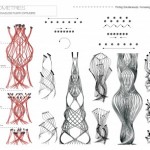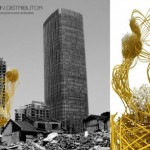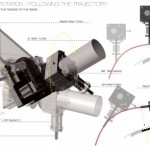MAA Students: Akram Ahmed (Sudan) , Christiana Vlanti (Greece), Pavlos Bakagiannis(Greece), Theodoros Grousopoulos (Greece)
Studio Instructor: Marta Malé-Alemany
Studio Assistant: Jordi Portell,Miquel Lloveras
Technical Experts: Santiago Martin, Guillem Camprodon, Santiago Martín González
Project Summary:
Emergent ecological problems require a different approach as far as the architectural practice is concerned. As architecturecannot be seen independently from its environment-and especially today more than any time in the past-the design, the material and the actual architectural process must comply with and adapt to the occurred environmental needs.Triggered by the global issue of plastic waste and its consequences, the project seeks to contribute to the literal purge of the problem. Instead of using an aggregate raw material, it exploits the potential of a material coming immediately from post-consumer waste, approaching through an innovative manner. Thus, PET plastic coming straight from garbage are used in order to explore the relation between matter, design and technology. Its abundance and chemical and physical properties were crucial for its choice. The purpose of this project is to investigate a range of design and production methods using PET flakes by setting up digital work flows that are constantly fed with data by the material system. After a series of experiments to fully understand the behavior of the raw material, the project develops structure methodologies using sensor-based generative design methods connected to customized fabrication hardware. The ultimate goal of this research is to propose application of PET in architecture allowing a potential construction of structures on site.
-Supporting Material: The structures are created without any need of a cast. The same material works is both structural and supporting.
- Catalyst: No catalyst is used for the solidification process. The solidification of the material happens through the exposure to the environment.



